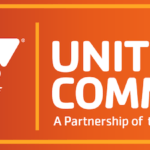Workplace safety is a requirement of effective healthcare operations. In environments where every second counts, the safety of staff and patients is a regulatory requirement and a moral imperative. This blog explores practical tools to enhance workplace safety in healthcare.
The Challenges of Safety in Healthcare Settings
Healthcare facilities are environments where safety challenges can arise at any moment. Administrators must meet strict compliance standards while managing budgets and finding scalable solutions. Facility managers must coordinate safety measures across large, complex teams, often in facilities with multiple departments and high patient volumes.
Meanwhile, frontline workers, such as nurses and technicians, need quick and reliable communication tools to respond to emergencies and stay safe in high-stress situations. These challenges show the need for solutions that address the unique demands of healthcare environments.
Practical Solutions to Address Workplace Safety Challenges
To tackle these challenges, healthcare facilities should adopt a multi-faceted approach to workplace safety. Comprehensive safety training prepares all staff members to handle emergencies and reduce risks. Clear safety protocols provide a standardized framework for responding to incidents, minimizing confusion and delays.
Reliable communication tools, such as two-way radios, bridge these gaps in safety protocols. These devices offer instant, clear communication, even in areas with poor cell service, making them an invaluable asset for healthcare teams. Technologies, like panic buttons and monitoring systems, can enhance safety by providing real-time alerts and support during emergencies.
Real-World Examples of Safety Tools in Action
The impact of this becomes evident when applied to real-world scenarios. For instance, a facility manager can use two-way radios in their office to coordinate a fire drill across multiple departments, accounting for and preparing all staff members. In another scenario, a nurse facing a workplace violence incident could quickly alert security using a panic button, preventing escalation and keeping themselves safe.
Administrators who implement standardized safety protocols experience reduced response times during emergencies, leading to better outcomes for both staff and patients. This demonstrates how practical tools address the pain points faced by healthcare professionals and create safer environments.
Building a Safer Future for Healthcare Teams
Workplace safety in healthcare is about creating an environment where professionals can focus on delivering exceptional care without fear or distraction. By investing in the right tools and strategies, healthcare facilities can protect their teams, improve operational efficiency, and ultimately enhance patient outcomes.








